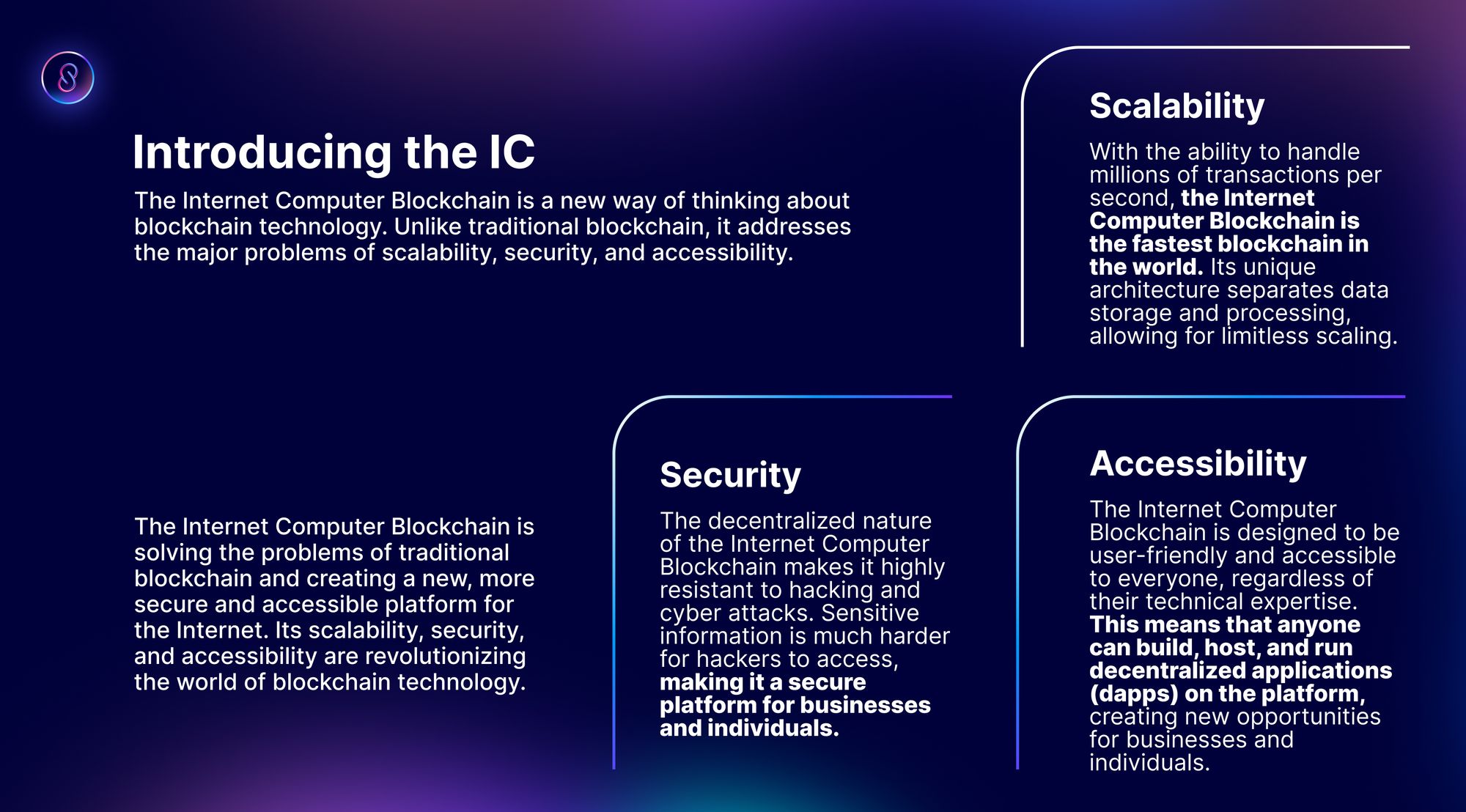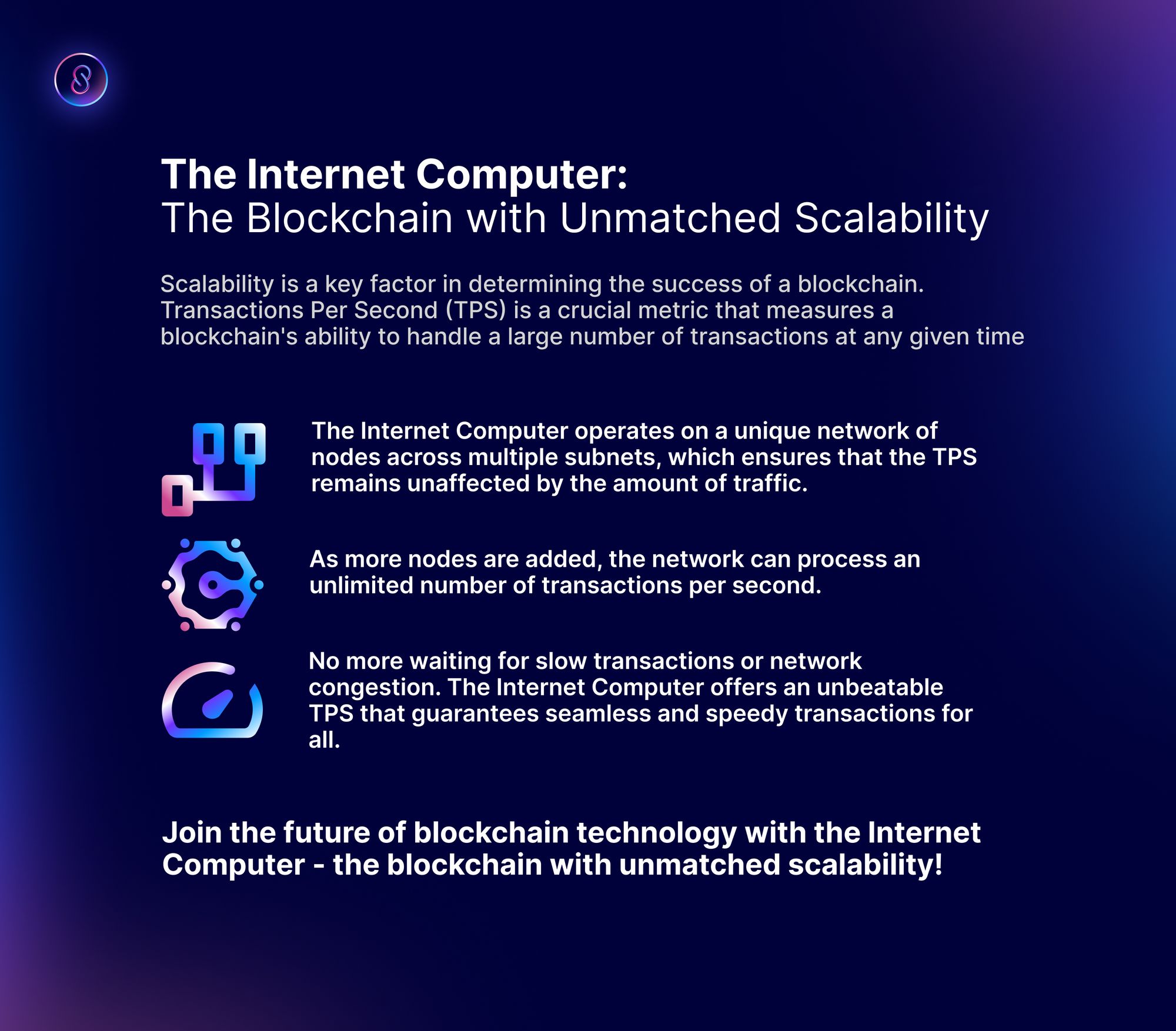The Internet Computer Blockchain and Scalability: How it is Solving the Problems of Traditional Blockchain
The Internet Computer (IC) blockchain is a rapidly evolving layer-1 blockchain that addresses the scalability issues of other layer-1 blockchains

The Internet Computer (IC) blockchain is a rapidly evolving layer-1 blockchain that addresses the scalability issues of other layer-1 blockchains, such as Ethereum, Cardano, Solana, Binance Smart Chain, Zilliqa, Algorand, and Avalanche, through its innovative architecture and utilization of Chain-Key Cryptography. This architecture enables the IC to handle a vast number of transactions per second.

IC, the first “World Computer” blockchain, is a decentralized network that empowers developers to create and host decentralized applications (dApps), websites, and other Web3 services without relying on centralized IT solutions such as cloud services. The absence of centralization in the IC network means that the applications and services are not dependent on a single entity or server, ensuring maximum security, transparency, and decentralization.
The attributes of the Internet Computer represent a ground-breaking solution for developers seeking to build secure and scalable Web3 services without the requirement for centralized IT infrastructure.
Stifled Scalability in Traditional Blockchains.
One of the significant challenges traditional blockchains face is scalability, which refers to the capacity of a blockchain to accommodate high transaction volumes and future growth. This poses a challenge for traditional blockchain networks as they depend on inefficient consensus mechanisms to keep their network functioning effectively while also providing opportunities for corporate entities and unguaranteed uptime of their systems.
However, the Internet Computer tackles this issue through a consensus mechanism known as “Proof-of-Useful-Work (PoUW),” driven by advanced cryptography. This mechanism is faster, more energy-efficient, and more secure. It guarantees uptime in contrast to the Proof-of-Work (PoW) and Proof-of-Stake (PoS) consensus mechanisms utilized by other blockchain networks.
The IC’s technological architecture offers a solution for processing transactions at a much faster rate, leading to improved scalability.
Another problem obstructing the scalability of traditional blockchains is the high cost of hosting dApps and Web3 services. This is not the case on the Internet Computer as code and data coexist on-chain, which is a major advantage for scalability. As it is today, 1GB of on-chain storage on Ethereum costs approximately $240 million, $840,000 on Solana, and only $5 on the Internet Computer (paid-in cycles tokens which are stable coins and do not fluctuate). This is a significant advancement for Web3 as data storage, and ownership can now be accomplished cost-effectively and securely without the involvement of centralized entities.

It is important to highlight from the paragraph above that the Internet Computer not only offers affordable on-chain data hosting, but it also resolves the issue of data privacy. Unlike traditional blockchains that store all data on a publicly accessible ledger, the Internet Computer enables developers to keep their data private and secure while preserving the benefits of decentralization.
Internet Computer’s ability to scale.

An essential metric to gauge a blockchain’s scalability is its Transactions Per Second (TPS). TPS indicates the number of transactions that a network can process per second. This is a theoretical calculation derived by dividing the number of transactions per block by the block time. The Internet Computer leverages its innovative Chain Key technology to finalize transactions that modify smart contract states within 1-2 seconds.
Furthermore, the Internet Computer operates on a network of nodes across multiple subnets. As more nodes are added over time, the TPS of each subnet multiplies, leading to an increase in overall TPS. There is no limit to how high TPS can go on the Internet Computer as long as more nodes are added. No amount of traffic can impede the transactions per second on the IC network as long as more nodes are added.
In conclusion,
The Internet Computer is making strides in resolving the scalability challenges that traditional blockchains face despite not yet receiving the recognition it deserves. It incorporates cutting-edge architecture and a more advanced consensus mechanism, resulting in faster, more energy-efficient, and more thoroughly decentralized operations.
Developers can also host Web3 services and store data affordably directly on the IC network, prioritizing data privacy and making the network more accessible. With its limitless scalability potential, IC is positioning itself as the go-to blockchain for developers, businesses, and organizations needing a fast, secure, scalable, and fully decentralized network.

Connect with InfinitySwap
Bitfinity Wallet |AMM | Twitter | Website | Telegram | Discord | Github

*Disclaimer: While every effort is made on this website to provide accurate information, any opinions expressed or information disseminated do not necessarily reflect the views of InfinitySwap itself.





Comments ()